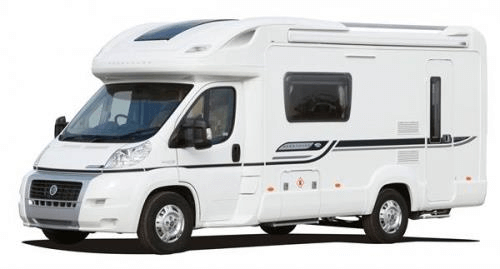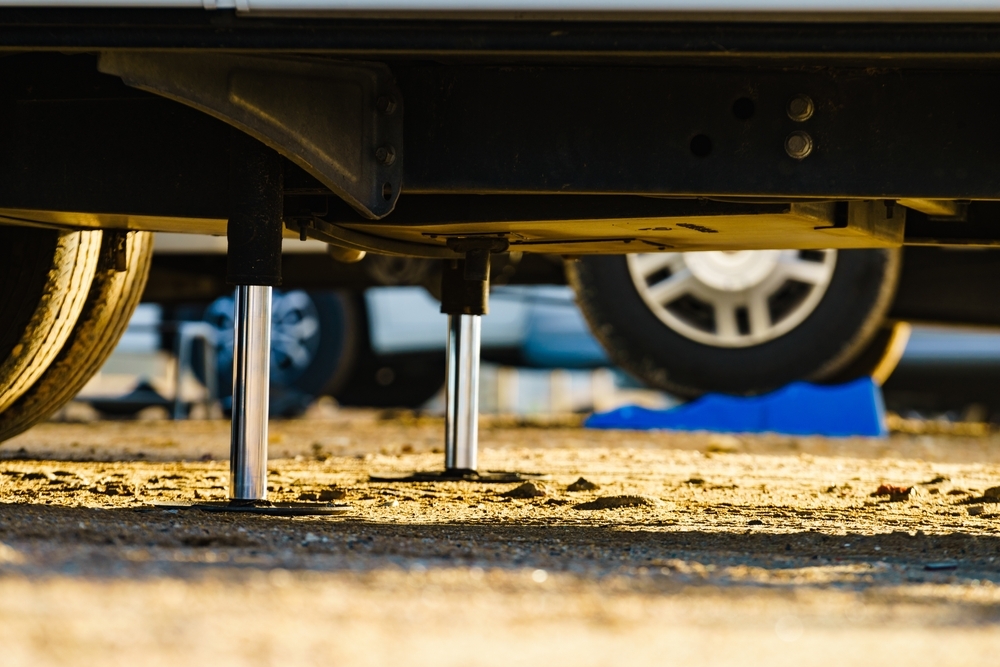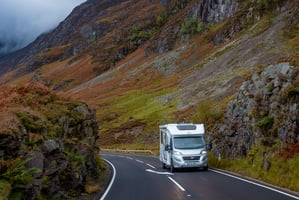If you’re exploring Scotland by motorhome, you might have heard of the Stay the Night scheme - a...
If you’ve ever spent time carefully driving back and forth on a pitch, shuffling your levelling ramps and chocks around, and still ended up sleeping on a slope, you’ll understand the appeal of a self-levelling system!
These clever systems promise to make setting up your motorhome quicker, easier, and more precise - but with prices ranging into the thousands, are they really worth the money? Let’s take a closer look at what they do, how they work, and what you should probably consider before taking the plunge…
What is a self-levelling system?
A self-levelling system is an automatic hydraulic or electronic system designed to level your motorhome perfectly at the touch of a button.
Instead of using manual levelling ramps under your wheels, a self-levelling system uses hydraulic or electric jacks mounted to the underside of the vehicle. When activated, the system extends or retracts the jacks to stabilise and level the motorhome automatically, ensuring that your vehicle sits perfectly flat on any uneven ground.
The system is usually controlled via a touchscreen panel, a smartphone app or a remote control, making it extremely convenient to use.
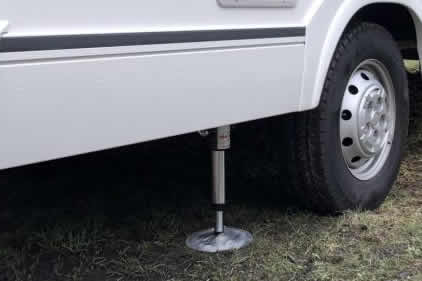
How do self-levelling systems work?
Most motorhome systems are hydraulic, using fluid pressure to lift and stabilise the motorhome. A central control unit receives input from sensors that measure how level the vehicle is. When you press the button, the system adjusts each leg individually until the motorhome is perfectly balanced.
Some systems, like electric self-levelling systems, use motor-driven legs instead of hydraulics. They tend to be lighter but slower, and sometimes less powerful for heavier motorhomes.
The key components of the setup typically include a hydraulic pump and reservoir (for fluid systems), levelling legs/jacks (usually four, mounted near each corner), a control unit with built-in sensors and a control panel or smartphone link.
The advantages of a self-levelling system
Effortless setup
One of the biggest draws is convenience. Levelling your motorhome manually can take several minutes (or more!) and often involves guesswork, ramps and thoughts of a spirit level! With an automatic system, it’s done in under two minutes, it’s hands-free, and its done without having to rely on someone else to guide you.
A perfect level every time
These systems achieve a level of precision that’s difficult to match manually. This means no more sliding off of the bed, no uneven shower drainage, and no appliances struggling to operate on a tilt.
Greater stability
When the jacks are down, your motorhome feels really solid and secure. There’s far less movement when walking around inside, which can be a noticeable improvement over using only wheel ramps or chocks when that rocking sensation kicks in. This is also the case for when it’s windy outside.
It’s a convenience for frequent travellers
If you use your motorhome often, or move from site to site regularly, the time saved can really add up. You simply park, press a button and you’re ready to go. And if you get stuck in the mud, it can be a godsend. Many of the systems are transferable to other motorhomes, if you change your vehicle in the future.
It’s helpful for storage and maintenance
A self-levelling system can also be used at home or if you break down, to lift the motorhome slightly for maintenance, for example changing tyres or working underneath it, or to level it for winter storage. It can also be helpful when fitting snow chains. Some systems even have a drain-down mode to tilt the vehicle for emptying water tanks which is also handy for draining the shower tray as well.
It hinders thieves!
Having a self-levelling system in place can make it more difficult for thieves to steal your motorhome, and some have a security pin code that needs to be used in order to access the controls.
The alternative...
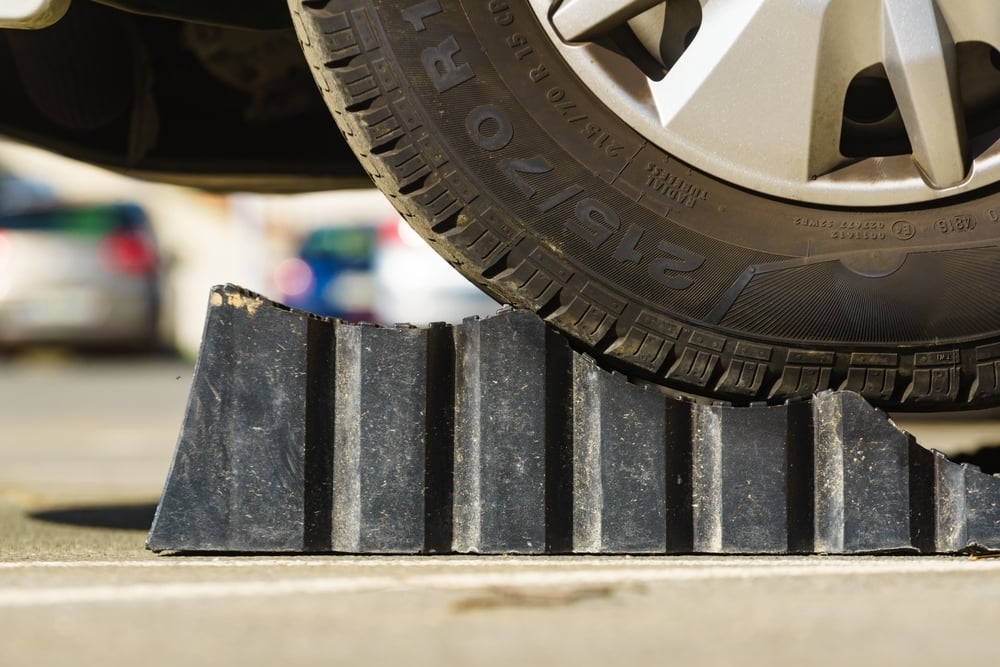
The potential drawbacks of a self-levelling system
There’s a high cost involved usually
This is the biggest factor for most owners. A fully installed hydraulic self-levelling system typically costs between £3,000 and £6,000, depending on the model and the size of the motorhome.
There’s added weight
Most hydraulic systems can add around 50-70 kg to your motorhome’s weight, which can eat into your payload allowance. For owners already close to the limit, this might be a concern.
Installation complexity!
Having professional installation is pretty essential, as it’s a fairly involved process requiring underbody mounting and wiring into the vehicle’s electrical system.
The potential maintenance costs
Although they’re generally reliable, hydraulic systems can develop leaks or faults over time. The repairs can be expensive, especially if the vehicle has to be lifted or parts need replacing. Remember to include their value in your motorhome insurance policy, as this means in the event of insured damage or write off, your levelling system will be covered for repair or replacement.
It might seem like overkill…
If you only go away a few times a year or always stay on well-maintained, level pitches, you might find a set of good-quality levelling ramps does the job perfectly well for a fraction of the price.
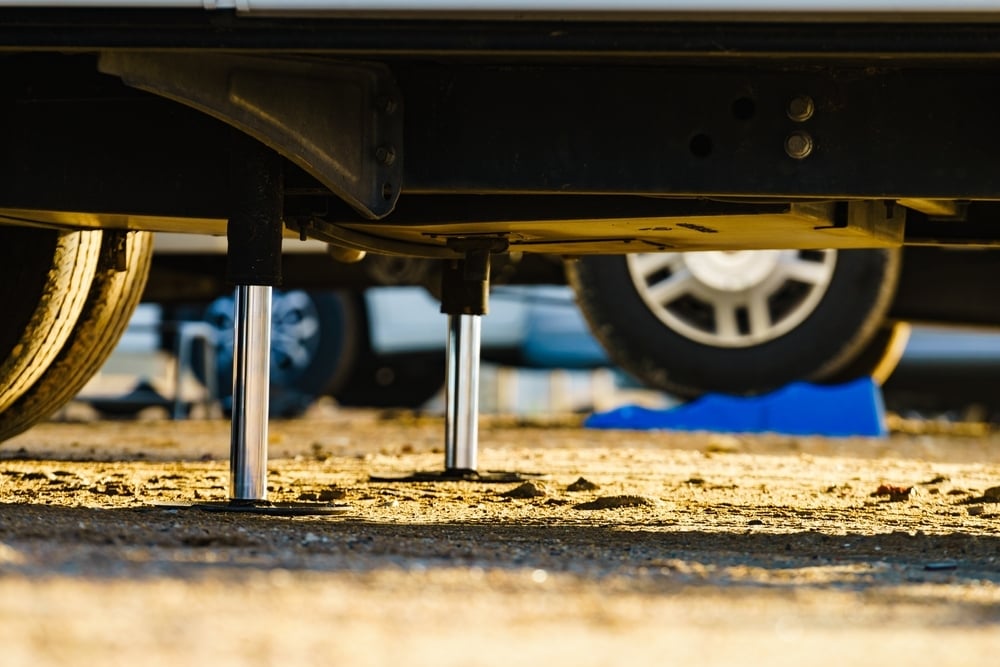
So, are self-levelling systems worth the money?
It depends entirely on how you use your motorhome!
They’re surely worth it if you travel frequently or move pitches often; if you value convenience and comfort over cost, if you struggle with manual levelling due to mobility or strength issues and/or you want to aim for maximum stability on all terrain.
They may not be worth it if you only go away a few times a year, if you mostly stay on level sites or if you’re on a tight budget or already close to your weight limit.
In short, a self-levelling system is a luxury, not an essential, but it’s one that many motorhome owners who invest in never want to live without again! Self-levelling systems bring a touch of modern luxury to motorhoming. They eliminate one of the most tedious parts of setting up and provide rock-solid stability in minutes.
While the upfront cost is high, the convenience, precision and comfort they offer can make touring far more enjoyable - especially for those who use their motorhome regularly. For the occasional holidaymaker, manual ramps will do just fine. But for keen travellers who want the ultimate ease of setup, a self-levelling system might just be worth every penny.


